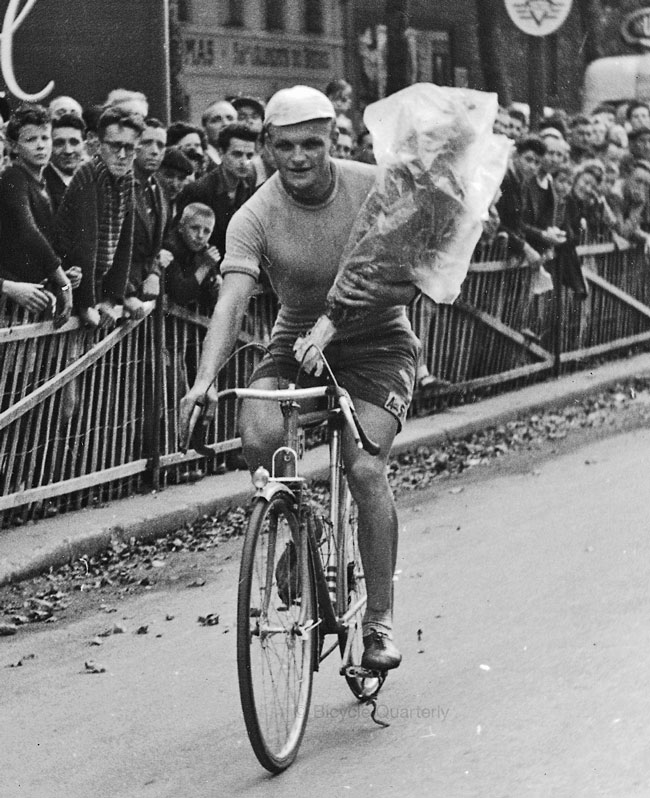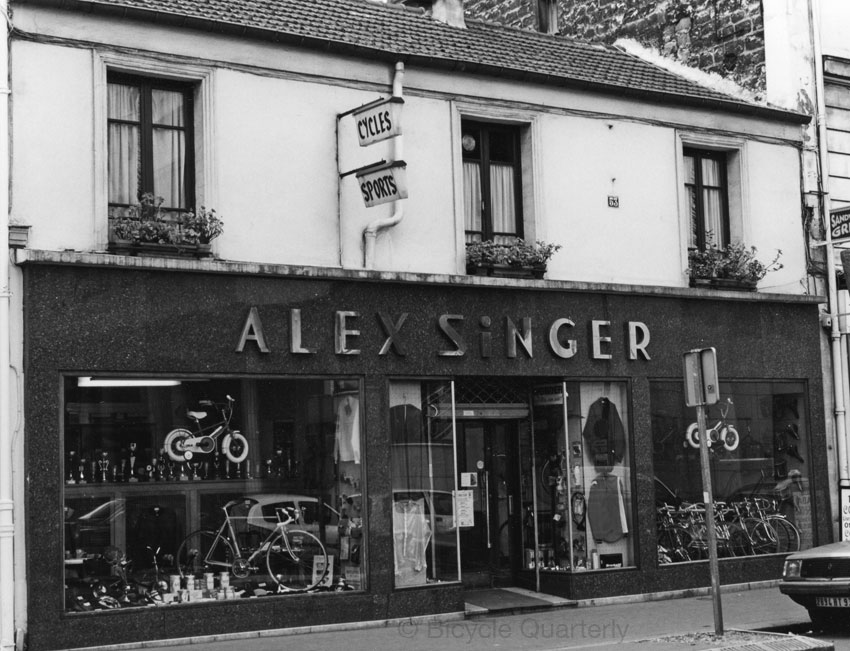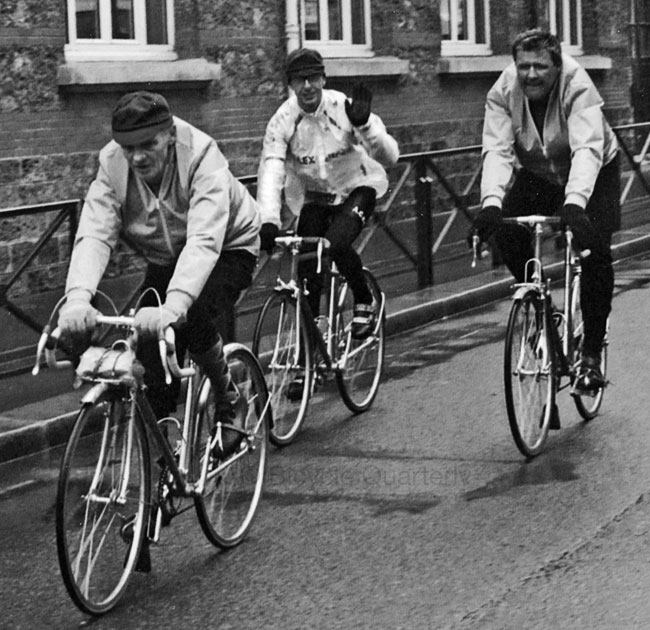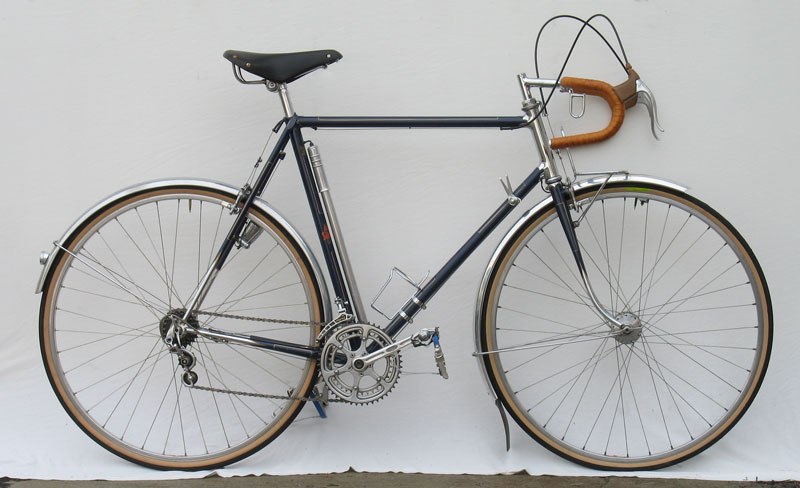People Who Have Inspired Us: Ernest Csuka

It’s hard for me to believe, but it has already been three years since Ernest Csuka passed away. I wrote in his obituary in Bicycle Quarterly: “He was the last of a generation of great constructeurs.” Indeed, Ernest Csuka had experienced most of the post-war history of the French constructeurs first-hand and was a great source of information. But that doesn’t even begin to describe him. To me he was also a valued mentor and a great friend.
I still remember the day I first visited the shop in 1999 after completing my first Paris-Brest-Paris. I was just discovering the bicycles of the French constructeurs, and with the help of a French childhood friend, we figured out where this mythical shop was. As I turned the corner, I saw the little shop, tucked between the high-rises that had sprouted around it in recent decades. My elation gave way to disappointment when I approached. The windows were covered with whitewash, and a handwritten sign read: “On vacation until September 1.” It was August 31, and I was leaving Paris the next morning. I peeked through the narrow gap between the whitewash and the window frame and spied marvellous cyclotouring bicycles inside. So close, yet so far away.

Just as I was about to leave, a small, old man rode up on a bicycle. He tried to enter the shop with a quick: “C’est fermé” (We are closed). Before the door closed, I blurted out that I had come all the way from the United States to visit the shop. He broke into a laugh and said: “Well, in that case, come on in.”
I stayed for three hours that day and bought my first set of Maxi-Car hubs. I returned three months later on my next visit to Paris to order a cyclotouring bike for my friend George Gibbs – the first Alex Singer to come to the United States in decades. Every time I visited, I learned more about bicycle design and the history of the French constructeurs.
Ernest Csuka had started working for his uncle Alex Singer in 1944, when he was 16 years old. Singer himself only had started to make bikes six years earlier. Ernest rode for Singer in the famous Technical Trials as well as in the Poly de Chanteloup hillclimb race. He formed one of the stronger tandem teams of the period with his fiancée and later wife, Léone Reymond. He was there when Tullio Campagnolo bought two Nivex derailleurs from Alex Singer at the Paris bicycle show. A year later, Campagnolo introduced his first parallelogram derailleur… and today, all derailleurs can trace their ancestry to that 1949 Campagnolo Gran Sport.
As my friendship with Ernest deepened, I was invited on his Sunday rides. I usually visited in the middle of winter, yet there were six to ten riders, all on Alex Singers. Ernest was the patron, who decided where we’d go and who entertained us with stories from the old days. After a few hours, we stopped at a café to warm up and dry out before heading home. I don’t believe Ernest missed a single Sunday ride until he was well into his 80s.

During the week, the workday ended when friends filed into the shop to have tea and coffee upstairs. In the old kitchen of Alex Singer’s apartment, we sat around the Formica table and talked. Ernest ran up and down the stairs to tend the shop. After his friends left, and the shop was closed for the night, the real work started. In the dimly lit workshop, Ernest set about working on cyclotouring bikes. Tending the shop during the day did not allow for the required concentration and focus. Watching him and occasionally lending a hand, I learned a lot about brazing and bicycle design as he added braze-ons, made racks and slowly created the complete bike. To answer my questions, he pulled jigs and tools out of the various corners of the shop and explained their use. Often, it was 10 p.m. before I took the train back to my friend’s house, elated by all I had learned. But even more, I had enjoyed the true friendship of a wonderful man.
When I started Bicycle Quarterly, the very first issue included a long interview with Ernest Csuka. For almost every issue after that, I called him to check facts, and with every conversation, I got some wonderful quotes. Not only had he been there and witnessed the events I was researching, but his memory was unfailing.
When I told Ernest that I wanted to ride a Singer, he was elated. However, instead of making me a new one, he suggested he could find a used one for me. And that is how I got the Alex Singer bike that I rode almost exclusively for many years. I completed my “best” Paris-Brest-Paris on it, plus many other memorable rides. The bike still serves as Bicycle Quarterly’s reference bike, as a benchmark of the performance a good bike should offer.
When one of the nicest classic Alex Singer bicycles came back to the shop after its owner died, Ernest knew how much I would appreciate it, so he put it aside for me. That bike was featured in a blog post earlier this year. I am lucky to be its caretaker, and every time I ride it, I am reminded of him on his own, very similar machine.
Even though time passed, Ernest did not seem to age significantly until he suffered a stroke in 2008. Despite a miraculous recovery, he no longer could ride his bike, and his ability to work was greatly reduced. Sadly, his life force diminished quickly from then on. I was lucky to spend a month in Paris the following winter, and he shared many more precious memories. When I said “Au revoir,” we both had tears in our eyes. We knew it was unlikely that we’d see each other again. Today, Ernest Csuka lives on in our memories, and in the wonderful bicycles he created. The one below is from 1954, updated with new components in the 1970s. Today Ernest’s son Olivier continues the tradition at Cycles Alex Singer.

Further reading:
- Interview with Ernest Csuka, Bicycle Quarterly 1.
- Ernest Cuska, 1928-2009, Bicycle Quarterly 31.


